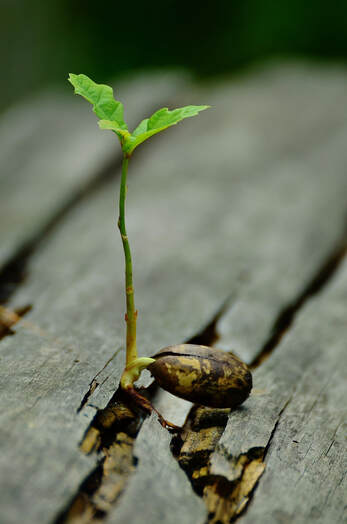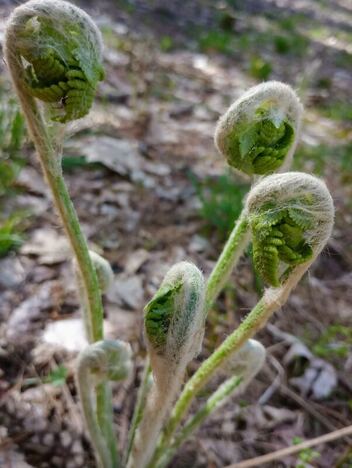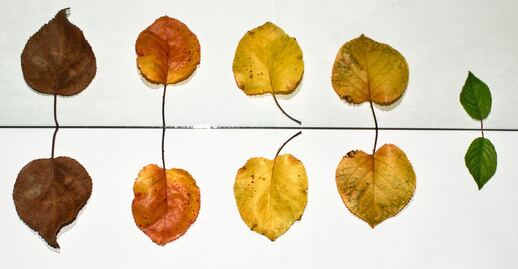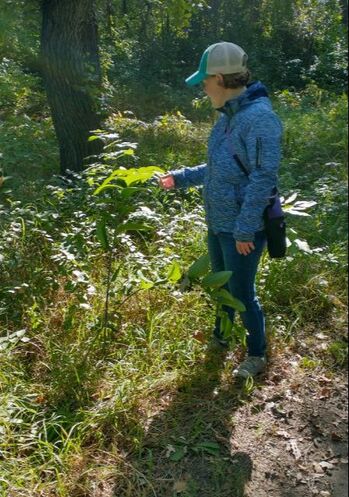The Roots of Resilience
|
The Roots of Resilience are part of a wholistic approach to cultivating resilient health. While we may focus on an individual root, in reality there is a lot of overlap and interdependence among the Roots.
The Roots of Resilience are:
Working with the Roots of Resilience is a circular path--we can choose a couple of Roots in which to begin our work and then later circle back to other Roots, or even revisit Roots and deepen our work there. There is no need to work on all of the Roots of Resilience at once. Each person will be coming to this work from a different point on the journey, so where and how each person begins working with the Roots of Resilience will differ. We're not aiming for perfection with any of the Roots of Resilience. We're working to bring some improvements, some additional comfort, some increase in resilience. And any amount of improvement, any bit of extra comfort, any amount of extra resilience in a Root area is great!
|
We can view the Roots of Resilience through both a macro (bigger picture) and micro (smaller picture) lens. At the outermost macro level is the larger community of humans and the more-than-human world and the interdependence that exists here. It's all connected--the health and wellbeing of each individual being (both human and more-than-human) is connected to the health and wellbeing of others. When we care about others, we care about ourselves; when we care about ourselves, we care about others. If we only care about others, we will suffer. If we only care about ourselves, others will suffer.
At the next level, we can think of how the Roots of Resilience apply to an individual. And then smaller yet, we can look at how the Roots apply to organ systems, tissues, and even smaller at the cellular and atomical levels.
Something to keep in mind is that each individual is an ecosystem--we are made up of atoms, cells, tissues, organs, organ systems, bacteria, viruses, and other beings that live in symbiosis with us. All of these "parts" make up "us." While we talk about things like the mind and body or individual organ systems separately for the sake of simplicity and communication, the truth is there isn't a hard boundary between them.
At the next level, we can think of how the Roots of Resilience apply to an individual. And then smaller yet, we can look at how the Roots apply to organ systems, tissues, and even smaller at the cellular and atomical levels.
Something to keep in mind is that each individual is an ecosystem--we are made up of atoms, cells, tissues, organs, organ systems, bacteria, viruses, and other beings that live in symbiosis with us. All of these "parts" make up "us." While we talk about things like the mind and body or individual organ systems separately for the sake of simplicity and communication, the truth is there isn't a hard boundary between them.
Rhythm: daily/monthly, seasonal, life stages
All of nature, ourselves included (down to the cellular level), functions according to a variety of rhythms and cycles. Often we don't even notice these rhythms and cycles. But by beginning to pay attention to them, we can feel more rooted in a sense of regularity, even when life gets chaotic. And when we're aware of the rhythmic nature of life, we can intentionally choose to live our lives in a more rhythmic way--becoming conscious partners in the rhythms of life rather than passive beings that life simply happens to.
|
Rhythm holds the dichotomy of regularity and change. Food is a good example: we may eat at regular times each day, but we don't eat the same foods at every meal. The foods we eat will change according to things like our activity levels and the seasons. The seasons too are both regular and different. Winter may occur each year, but this winter is different than last winter and the one before that. Diversity is an important element of rhythms and cycles--having new and different experiences, learning new things, and being open to new ideas and ways of doing things is how we grow and evolve.
|
Daily/monthly rhythms: These are the ups and downs of our energy cycles, sleep cycles, the flow of our daily life (i.e. Do we eat at regular times? Go to bed and wake at regular times?), the rhythms of our breath, rituals we do on a regular basis--like meditation, prayer, movement, etc. Monthly rhythms can include the menstrual cycle (for those who menstruate), our energy cycles of, the moon phases and how those phases affect us, etc.
Seasonal rhythms: Here we can think about the four (or five if thinking in terms of Traditional Chinese Medicine) seasons and their transition periods. Based upon the seasons, we might choose different foods to eat (i.e. hot soup in winter, cooling watermelon in summer), adjust our activity levels, honor seasonal changes in our energy levels, or choose different kinds of movement (i.e. swimming in a lake in summer, raking leaves in fall).
Life stages: The larger cycles of birth, death, and rebirth and youth, midlife, old age, etc. Birth, death, and rebirth can be thought of both physically and metaphorically. Things like our emotions, thought patterns, and ways of being can go through cycles of birth, death, and rebirth (or transformation). Here, too, we can think of the ups and downs of life--times of immense joy and times of immense sorrow.
Nourishment: mind, body, emotional/spiritual heart
Nourishment is about more than just the food we eat. It's also about how we feed and honor our minds and the emotional and spiritual aspects of our hearts. Even with the food we eat, we can ask ourselves if we are truly nourishing ourselves by honoring the needs of our body or if we're following the dogma of a particular diet that may not be meeting our needs?
Mind: Are we providing our minds with intellectual stimulation--new experiences, learning new things, etc.? What about our thought patterns, the ways we commonly think? Can we work on being open to new ideas and ways of thinking? Here, too, we can reflect on our mental health. According to the World Health Organization, "mental health is a state of mental well-being that enables people to cope with the stresses of life, realize their abilities, learn well and work well, and contribute to their community."
Body: Are we eating the foods our body needs to feel nourished, have adequate energy, and run as smoothly as possible? Are we addressing any food intolerances or allergies? Remember, every body's needs are different. Each person's constitution, life stage, health status, and activity levels differ and so each individual's food needs are going to be different. There is no one right way to eat. Here, we can also think about our relationship with food. And nourishing the body includes thinking about hydration.
Emotional/Spiritual Heart: Do we feed our emotional/spiritual heart by doing things that bring us joy and pleasure? Do we cultivate love for self and others? Is our mind serving our heart rather than our heart serving our mind? What is our heart's desire(s)? This is a place to work on accepting our emotions (all of them, not just the "good" ones) and making friends with our shadow self so we can feel more whole. Do we pay attention to and nurture our emotional landscape? Caring for the health of our emotional/spiritual heart contributes to more resilient physical heart health.

Image by NatureFriend from Pixabay
Movement: body, digestion & elimination, breath
Body: Moving our bodies isn't just about going for a walk or run, a yoga class, or hitting the gym. Those things can be great, but usually they are for a set amount of time and then we're done. The human body is designed to move throughout the day...not just for 30 minutes a day. How can we find ways to bring movement into our daily rhythms? Movement also means thinking about alignment--how we sit, stand, move. Physical movement helps move fluids, like lymph (which doesn't have a pump and so requires us to move) and blood (yes, the heart does pump blood, but it can't do it all by itself--it needs us to move too). Movement is accessible to nearly every body, even if it needs to be assisted. Most importantly, find ways to move your body that you enjoy. Our emotional and mental well-being are also affected by physical movement--moving stagnant emotions, releasing stress, and reducing mental stagnation.
Digestion & Elimination: Does food move through our digestive tract efficiently so that our body can absorb the nutrients it needs? You may have heard the phrase, "you are what you eat." But it's more about "you are what you digest." Without good digestion, the body will struggle to get the nourishment and energy it needs, no matter what specific foods you are eating. Elimination is not only about our poop and pee, it's about all of the pathways of elimination-- i.e. liver, kidney, lymph, skin, lungs, colon. Are the pathways of elimination working efficiently or is their stagnation or other issues impeding them? We can also think here about how we "digest" and move (or let go of) thought patterns, external stimulus, stress, and emotions; letting go of that which no longer serves us. We want to keep things moving rather than letting them get stuck or stagnant.
Breath: Due to busy and stressful modern lives, we can end up in patterns of shallow breathing or even holding our breath. Taking time for conscious breathwork can help shift these patterns. With each inhale, we bring in more oxygen to nourish every cell in our body and with each exhale, we are able to relax more and reduce the effects of stress. Breathwork may seem simple, but pausing a few times throughout the day to focus on the breath is powerful.

Image by Dieu vath MAYOMA from Pixabay
Renewal: sleep, rest, stress management
Sleep: In our busy, modern lives, this critical, foundational element to good health often gets overlooked. It is during sleep that our body can focus on repair work, detoxification, and more...helping the entire ecosystem that is the body be more resilient, strong, and efficient. Dreamtime helps us process the events of the day, especially at the emotional level. Without adequate sleep (not just what you can "get by on," but the amount your body actually needs), it becomes increasingly difficult for our bodies to maintain good health. Our immune systems become less resilient, stress affects us more, we often feel irritable (which affects our relationships), we find that we have difficulty remembering things, our digestion becomes impaired, and the longer we are chronically sleep deprived the more we are susceptible to things like high blood pressure, heart attack, and diabetes. Working on getting more sleep can often make profound improvement to overall health and wellbeing. One more note about sleep: it's helpful to also think about whether you have a safe, comfortable, healthy place to sleep.
Rest: Taking time to simply be, let the mind wander, to daydream...time to rest and relax...maybe simply resting our eyes while we focus on deep breathing. A nap could be included here if that's what is needed at the moment, but rest is about more than sleep. When we let ourselves do nothing, the brain can do it's wandering while we simply watch with curiosity--no need to get involved with what the brain is musing about. Asking our brains to be in productive mode or focused on a given task all the time leaves us exhausted. Rest and nature time are a great pair. Even if you can't get outside, simply sitting near a window and looking at the trees, grass, clouds, birds, squirrels, etc. will be restorative. Can you create a "rest nest" in your home? Maybe a corner with some cushions, a soft blanket, some artwork...whatever will help you feel cozy and relaxed. Rest breaks don't have to be long...even just 5 to 10 minutes here and there can have a huge impact.
Stress Management: It's pretty clear that modern life is stressful. It's important that we do what we can to manage the stress in our lives. The goal isn't to eradicate all stress--in fact, we need some level of stress to help us build resilience. And some stressors aren't going away in the near future...like systemic racism, patriarchy, economic oppression, etc. When the stress load becomes too much, then stress can start negatively affecting our health and wellbeing. Taking time to periodically evaluate our stress loads and the ways we are managing stress levels (or not) is key. Are their stressors we can eliminate now or in the near future? What about the things we can't change right now? Is there a way we can better respond to or deal with those stressors? The other Roots of Resilience often come into play here. Part of stress management includes putting together a personal toolbox of tools you can call upon to help you deal with the stressors in your life. This could include herbs, a friend you can talk to, meditation, a daily walk, etc. Also, thinking about making time to do things that bring more joy, fun, play, creativity, and pleasure into your life can go a long way towards helping your better manage stress. Most of all, be gentle with yourself. When we're really stressed, it can often be difficult to realize that there is even anything we can do about it.
Connection: self, relationships/community, nature
Self: Connecting to and having a relationship to ourselves is important for many reasons. One, we begin to realize that we are a whole, integrated being...not a separate body, mind, heart, etc. Secondly, when we have a healthy relationship with ourselves, we are in a better place to have a healthy relationship with other humans and the more-than-human world...and realize that we are connected to every other being. Some elements of cultivating a relationship with ourselves include: self-awareness, embodiment, self-love, a healthy ego, and cultivating a sense of the connectedness of our physical, mental, emotional, intuitive, and spiritual (whatever that means to you) aspects.
Do we honor our needs or ignore them? Do we love ourselves--every part of ourselves? Or do we constantly put ourselves down? Do we practice embodiment? An article on the Trauma Research Foundation website titled, Defining Embodiment, by Karden Rabin (September 27, 2022), gives a nice definition and example of embodiment: "The act of expanding one's self-awareness to include the felt experience of the body, such as sensory, sensational, emotional and physical experiences, and incorporating that information into one's overall conception and conduct of themselves, their identity, beliefs, behaviors, and ways of being.//Using emodiment, she was able to realize that her short tempered outburst had nothing to do with her child asking for more snacks, but because she felt physically trapped and overwhelmed."
Do we honor our needs or ignore them? Do we love ourselves--every part of ourselves? Or do we constantly put ourselves down? Do we practice embodiment? An article on the Trauma Research Foundation website titled, Defining Embodiment, by Karden Rabin (September 27, 2022), gives a nice definition and example of embodiment: "The act of expanding one's self-awareness to include the felt experience of the body, such as sensory, sensational, emotional and physical experiences, and incorporating that information into one's overall conception and conduct of themselves, their identity, beliefs, behaviors, and ways of being.//Using emodiment, she was able to realize that her short tempered outburst had nothing to do with her child asking for more snacks, but because she felt physically trapped and overwhelmed."
Relationships/Community: Do we have healthy relationships in our lives? Do we know how to create healthy boundaries, and do we respect the boundaries of others? Do we know how to communicate well and actively listen? Do we feel a sense of community? Do we have a good support system--people we can talk to about whatever is going on for us or ask for help (and to whom we can offer the same)? How do we feel about asking for and receiving help? In modern western society, there is the pervasive belief that one must "pull oneself up by one's bootstraps." Asking for and needing help is often seen as a personal failure. Yet we all need help and support from others, whether we recognize that or not. Humans have always been cooperative, group creatures. Life is hard. Why go through it alone? Yes, relationships are hard. But, again, we're not aiming for perfection. We're working to bring some improvements.
Thinking about mutual aid and social justice are important aspects of community. Everyone deserves to have their needs met. Both the individual and collective are important. Without the individual, there is no collective and without the collective, there is no individual. Put another way, the collective must care about the individual and the individual must care about the collective. "How do we care for each other in our unwellness?" ~Dr. mimi khuc, writer, scholar, and teacher of things unwell.
Thinking about mutual aid and social justice are important aspects of community. Everyone deserves to have their needs met. Both the individual and collective are important. Without the individual, there is no collective and without the collective, there is no individual. Put another way, the collective must care about the individual and the individual must care about the collective. "How do we care for each other in our unwellness?" ~Dr. mimi khuc, writer, scholar, and teacher of things unwell.
Nature: This is about remembering that we are a part of Nature and working to re-establish that connection (though it really never goes away, because humans ARE nature...it's more about the remembering). Among human-made surroundings, it's easy to forget that Nature is still everywhere. The air we breathe, all the water we come into contact with, tiny bugs that find their way into our structures, the houseplants inside our house, the trees outside, the dandelions, etc....the list in infinite. And then there are all the bits of Nature that we can't see...bacteria, fungi, viruses, etc. Even the most artificial of human creations are not possible without Nature.
Developing a relationship with the herbs we're working with is a great way to re-establish a connection with Nature. Maybe a plant we're working with grows nearby, maybe even as a weed in your backyard. Or maybe you could choose to grow one or more of the plants you're working with...even if it's just in a pot on our patio. Or even simply hang up an image of the plant(s) you're working with so you see them on a daily basis.
Another idea for Nature connection is to choose a sit spot--this could be in your yard, at a park, or any other location. It should be a place that you can easily get to on a regular basis. As often as you can (daily is great, but aim for at least once a week), go to your sit spot for at least five minutes. Notice Nature around you--plants, other animals, the wind, etc. Notice. Drop into your heart and see if you can feel your heart connecting with the rest of Nature. Remember, this is a practice. Maybe sometimes you'd like to bring a sketchbook and sketch what you observe. Maybe you'd like to journal your observations. Visiting your sit spot regularly will help you build relationship with the Nature around you and help you remember that you, too, are Nature.
Developing a relationship with the herbs we're working with is a great way to re-establish a connection with Nature. Maybe a plant we're working with grows nearby, maybe even as a weed in your backyard. Or maybe you could choose to grow one or more of the plants you're working with...even if it's just in a pot on our patio. Or even simply hang up an image of the plant(s) you're working with so you see them on a daily basis.
Another idea for Nature connection is to choose a sit spot--this could be in your yard, at a park, or any other location. It should be a place that you can easily get to on a regular basis. As often as you can (daily is great, but aim for at least once a week), go to your sit spot for at least five minutes. Notice Nature around you--plants, other animals, the wind, etc. Notice. Drop into your heart and see if you can feel your heart connecting with the rest of Nature. Remember, this is a practice. Maybe sometimes you'd like to bring a sketchbook and sketch what you observe. Maybe you'd like to journal your observations. Visiting your sit spot regularly will help you build relationship with the Nature around you and help you remember that you, too, are Nature.







